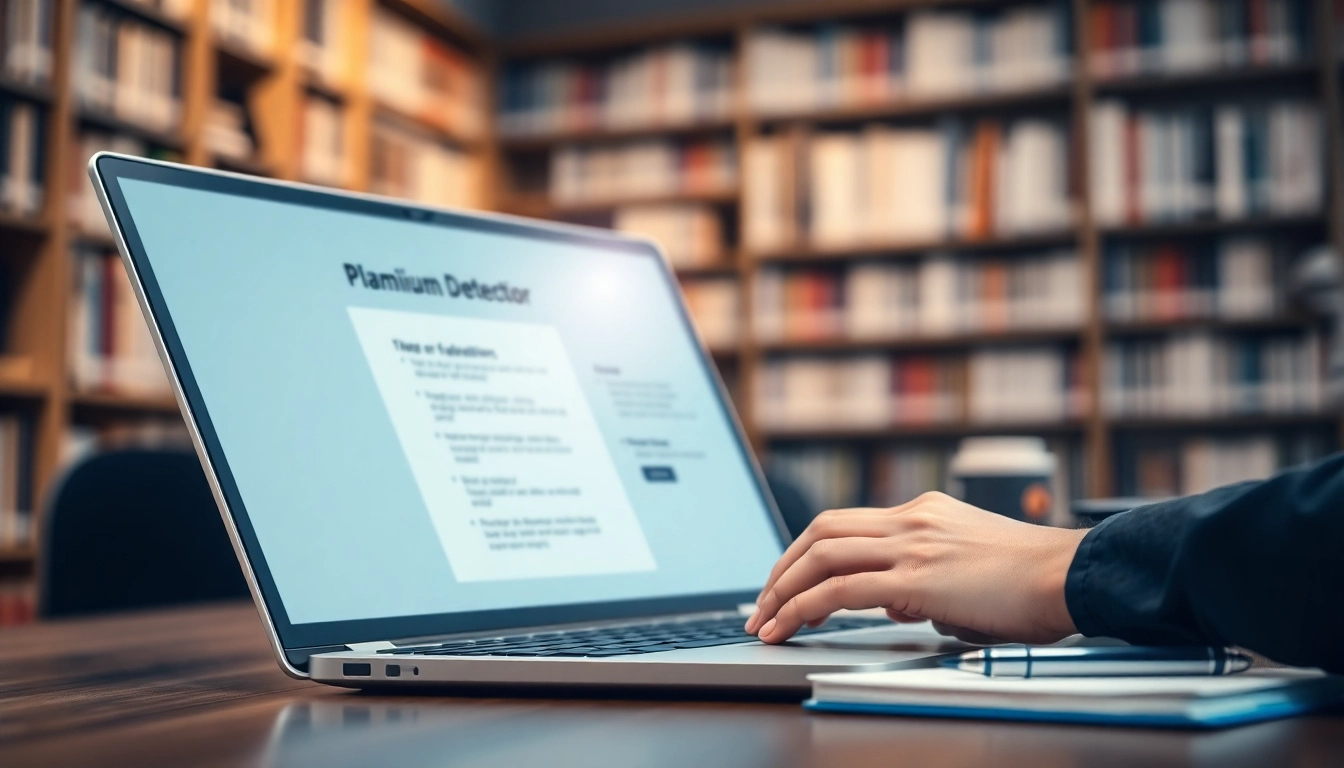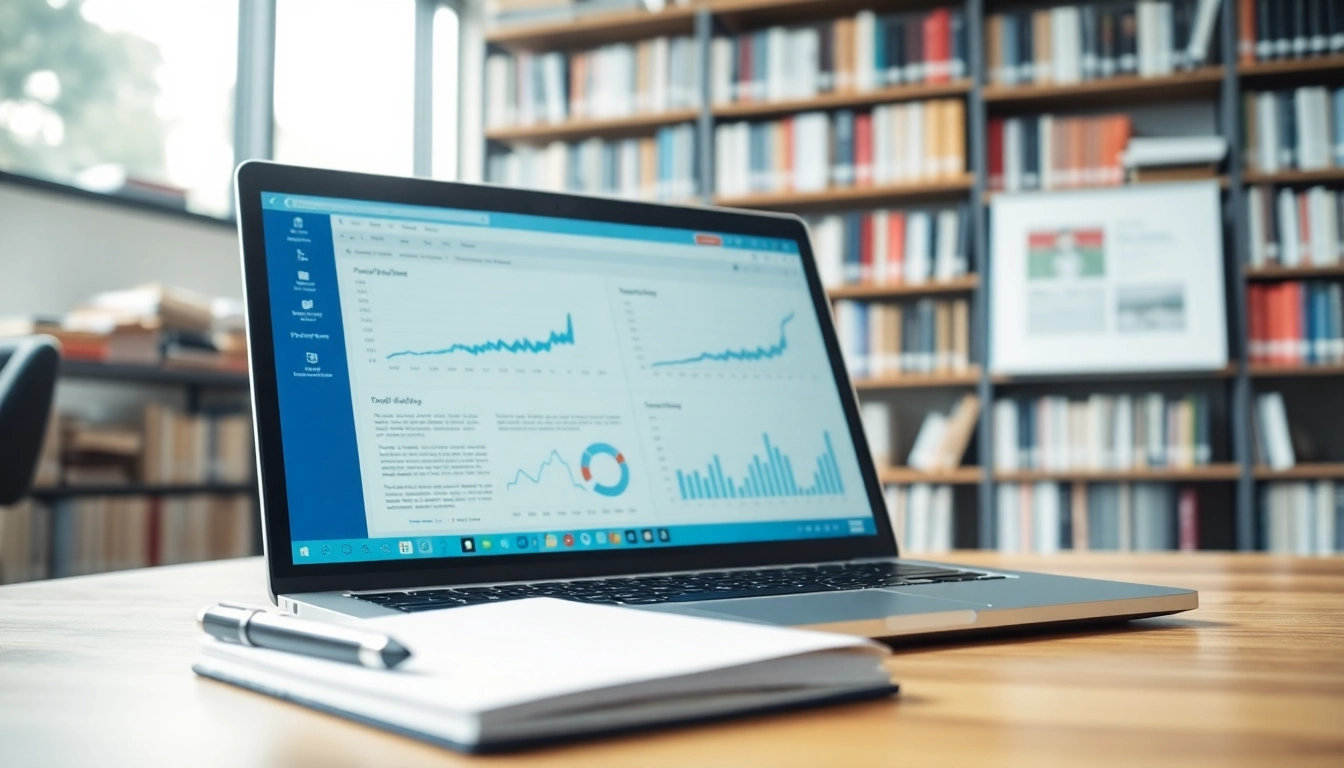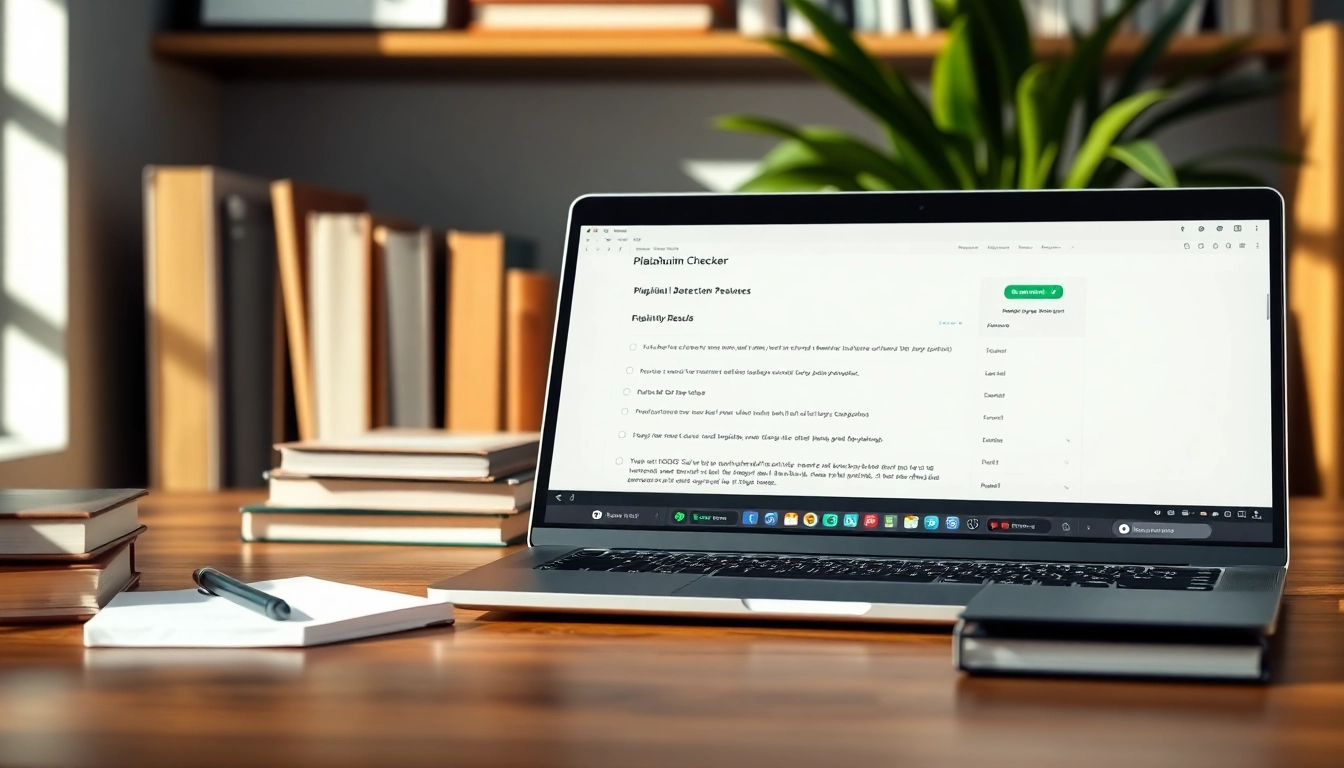Understanding Plagiarism and Its Implications
Plagiarism is a rampant issue across the educational and professional landscapes. It can take many forms, from copying another’s work without permission to failing to give appropriate credit to a source. These infractions can lead to severe consequences, both academically and professionally. Understanding plagiarism’s definitions, ramifications, and the tools available to combat it, such as a plagiarism detector, is essential for maintaining integrity in writing.
What Constitutes Plagiarism?
Plagiarism can be defined as the act of using someone else’s work, ideas, or intellectual property without proper acknowledgment. Here are the primary forms of plagiarism:
- Direct Plagiarism: Copying another individual’s work word-for-word without citation.
- Self-Plagiarism: Submitting one’s previous works as new, without disclosure.
- Patchwriting: Slightly rephrasing someone else’s ideas or text without proper citation.
- Accidental Plagiarism: Failing to cite sources correctly, often due to negligence or misunderstanding of citation rules.
Recognizing these forms is crucial, as misunderstanding can lead to unintentional violations of academic integrity.
The Consequences of Plagiarism for Students
Academic institutions take plagiarism very seriously. The consequences for students can include:
- Failing Grades: A paper or entire course may receive a zero if found guilty of plagiarism.
- Disciplinary Actions: Students may face suspension or even expulsion, depending on the severity and institution policies.
- Loss of Reputation: Being labeled a plagiarist can tarnish a student’s reputation, affecting future educational or job opportunities.
- Legal Consequences: In serious cases, plagiarism can result in legal actions due to copyright infringement.
Plagiarism in the Professional World
In professional settings, plagiarism can be damaging to one’s career. Effects include:
- Job Loss: Professionals caught plagiarizing may lose their jobs, as many employers maintain strict integrity policies.
- Lost Credibility: Once word gets out about instances of plagiarism, it can take years to rebuild trust with peers and clients.
- Legal Repercussions: Corporations can take legal action against employees for damages, especially if plagiarism leads to financial loss.
How a Plagiarism Detector Works
Understanding how plagiarism detectors function can help users make informed choices about the tools they utilize. These tools utilize a combination of algorithms and databases to assess the originality of written content.
Algorithms and Technologies Behind Plagiarism Detection
Plagiarism detectors usually rely on several advanced technologies, including:
- Text Matching Algorithms: These algorithms compare the submitted text against extensive databases and known sources to find matches.
- Natural Language Processing (NLP): NLP helps computers understand the context and meaning of text, allowing detectors to identify rephrased content and similar ideas.
- Machine Learning: AI-driven plagiarism detectors improve over time by learning from user data and detected patterns, increasing their detection accuracy.
Accuracy and Effectiveness of Different Tools
Different plagiarism detection tools come with varying degrees of accuracy and features. Here are some points to consider:
- Database Size: A larger database increases the likelihood of detecting copied content. Tools like Turnitin have extensive databases used by educational institutions.
- Real-time Processing: Some tools offer immediate feedback, which can be essential for students working on tight deadlines.
- Report Detailing: High-quality tools provide detailed reports that show where potential plagiarism occurs, making it easier to fix issues promptly.
Common Limitations of Plagiarism Detectors
While plagiarism detectors are highly beneficial, they do have limitations:
- Subscription Models: Many of the more effective tools require a subscription, which can be a barrier for some users.
- False Positives: Tools may flag properly cited material as plagiarized if the matching algorithms are overly aggressive.
- Limited Access to Certain Texts: Some detectors cannot access all academic publications or proprietary databases, leading to incomplete assessments.
Choosing the Right Plagiarism Detector
Selecting the right plagiarism detector is crucial in maintaining the integrity of your work. With numerous options available, here are some factors to consider.
Key Features to Look For
When evaluating plagiarism detectors, consider the following features:
- Comprehensiveness: Choose a tool that searches multiple sources, including academic journals, books, and web content.
- Report Generation: Look for tools that provide clear, insightful reports that detail the plagiarism percentage and sources matched.
- Usability: A user-friendly interface can significantly enhance the experience, especially for first-time users or those less tech-savvy.
Comparing Free vs. Paid Plagiarism Detectors
Many free plagiarism detectors are available online, but they often come with limitations compared to paid options:
- Free Tools: While useful for quick checks, free tools might lack in-depth detection capabilities and extensive databases.
- Paid Tools: Investing in a paid detector often provides access to more comprehensive features, better accuracy, and thorough reports.
Ultimately, choosing between free and paid tools depends on your specific needs and usage frequency.
User Reviews and Recommendations
User feedback can provide valuable insights into a plagiarism detector’s effectiveness. Reviews often highlight:
- Comparative accuracy with other tools.
- User interface simplicity.
- Customer support quality.
Seeking recommendations from peers, professors, or online forums can also lead to making a more informed choice.
How to Use a Plagiarism Detector Effectively
Using a plagiarism detector is straightforward, but to ensure legitimacy and accuracy, follow these best practices.
Step-by-Step Guide to Checking Your Work
- Choose Your Tool: Select a reliable plagiarism detection tool based on your preferences established previously.
- Prepare Your Document: Ensure your text is polished and formatted correctly for submission.
- Run the Check: Copy and paste your text into the tool or upload the necessary document format.
- Review the Report: Analyze the plagiarism report, focusing on flagged sections and revising them where necessary.
- Make Necessary Edits: Correct any areas of concern before finalizing your document for submission.
Best Practices to Avoid False Positives
To minimize false positives when using plagiarism detectors, consider the following:
- Use Quotations: Direct quotes should be enclosed in quotation marks and correctly cited.
- Paraphrase Effectively: When rephrasing someone else’s ideas, ensure that you deeply understand the material to express it in your own voice.
- Strong Citation Practices: Familiarize yourself with and adhere strictly to citation styles like APA, MLA, or Chicago.
Integrating Plagiarism Checkers in Your Writing Process
Incorporating plagiarism checkers into your regular writing routine can significantly enhance the quality and integrity of your work:
- Pre-Writing Checks: If you’re drawing heavily from certain texts, run those drafts through a plagiarism detector first.
- Mid-Writing Checks: After completing sections, run them individually to ensure no accidental plagiarism has occurred.
- Final Check: Always run a complete text check before submitting or publishing any written work.
The Future of Plagiarism Detection Technologies
The field of plagiarism detection is evolving rapidly, influenced heavily by advancements in AI and machine learning technologies.
Emerging Trends in Detection Technology
Several trends are shaping the future of plagiarism detection:
- AI and Machine Learning: These technologies allow for improving the accuracy of detection tools, including understanding context better.
- Real-Time Editing Tools: Integration with writing software will allow users to check for plagiarism as they write.
- Mobile Accessibility: The rise of mobile devices suggests a need for mobile-friendly detection applications for on-the-go checks.
The Role of AI in Enhanced Detection
AI is set to revolutionize plagiarism detection in many ways:
- Contextual Understanding: AI can help determine the intent behind the use of specific phrases, distinguishing between legitimate use and plagiarism.
- Adaptive Learning: Machine learning models can learn from user inputs, becoming increasingly nuanced over time.
Predictions for Academic Integrity Standards
As technology evolves, so will the standards for academic integrity. Expectations will likely become even stricter as institutions adopt advanced plagiarism detection technologies, leading to:
- More Robust Policies: Educational institutions will likely revise their policies to address new challenges posed by advanced writing aids.
- Increased Education on Plagiarism: Teaching students about maintaining integrity and how to use tools effectively will become critical.
In conclusion, understanding and preventing plagiarism is essential for anyone engaged in writing, whether for academic or professional purposes. By leveraging advanced plagiarism detector tools and becoming educated on the implications of plagiarism, individuals can significantly enhance the quality and integrity of their work.















Leave a Reply